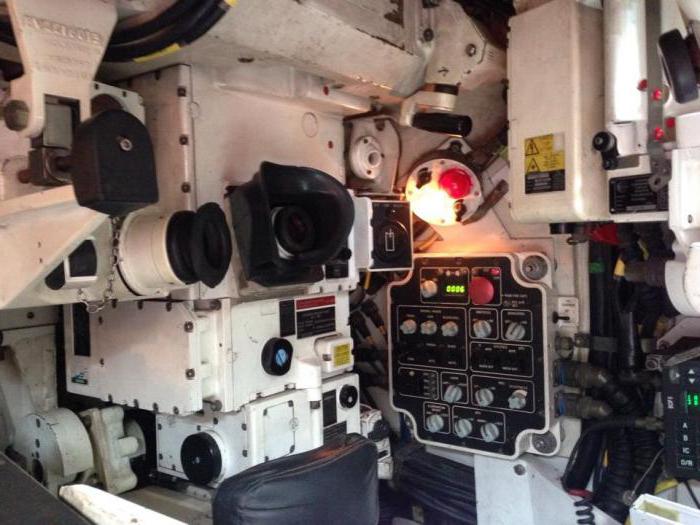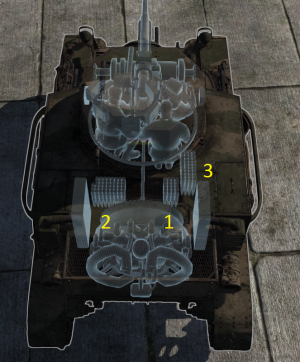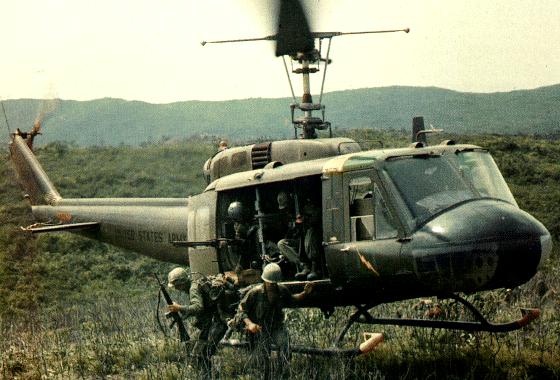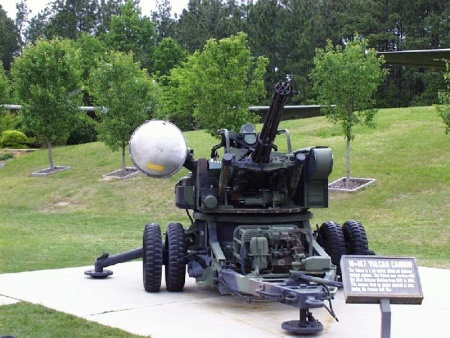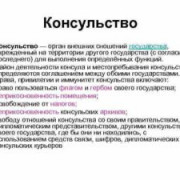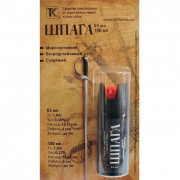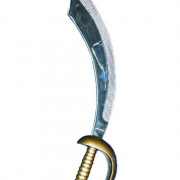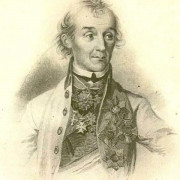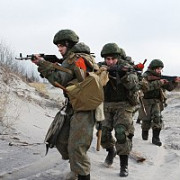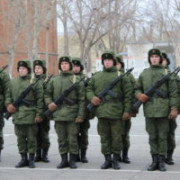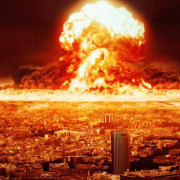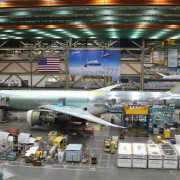40-мм орудие bofors
Содержание:
Weapons Edit
The Bofors 40mm Cannon is named after the cannon installed in this emplacement. It fires a slow burst of several shells, capable of destroying any light vehicle and even infantry.
Bofors QF 40mm Mk.III AA Cannon Edit
This weapon was originally designed as an anti-aircraft gun. It fires a slow succession of fast, accurate 40mm shells at enemy aircraft.
The cannon itself is crewed by three men — one to fire the gun, another to rotate it, and a third to reload. When depressed, the cannon can reliably fire at ground units, and swivels fast enough to target quick-moving vehicles, including Motorcycles. The 40mm shells cause between 25 and 35 damage per hit, and can rapidly destroy such vehicles.
The accuracy of the Bofors is quite high, and it can even target infantry. Two or three hits are required to kill a single infantryman, but due to the relatively high firing rate of the cannon, this can usually occur fairly rapidly.
Against heavier targets, the 40mm shells lack the Penetration power to go through the front armor of medium tanks, but will cause damage to a tank’s rear armor. Lighter-armored vehicles, such as armored cars, cannot deflect the Bofors shells reliably and will quickly be destroyed under its volleys.
Операторы
- Австралия
- Австрия
- Алжир
- Аргентина
- Бангладеш
- Бахрейн
- Белиз
- Бельгия
- Босния и Герцеговина
- Бразилия
- Бруней
- Великобритания
- Венесуэла
- Венгрия
-
Южный Вьетнам
Вьетнам
- Гана
- Гватемала
-
Третий рейх — на различных предприятиях в Германии (Rheinmetall-Borsig AG и др.), и за её пределами, в частности, в Австрии, Венгрии (MÁV и MÁVAG), Голландии (Hazemeyer B.V. — голландский филиал немецкой компании Siemens & Halske), Норвегии (Waffenfabrik Kongsberg).
Германия
- Греция
- Дания
- Джибути
- Доминиканская Республика
- Египет
- Израиль
- Иордания
- Индия
- Индонезия
- Ирак
- Иран
- Ирландия
- Исландия
- Испания
- Италия
- Йемен
- Казахстан
- Камерун
- Канада
- Катар
- Кения
- Кипр
- Китай — на заводах Китайской северной промышленной корпорации (копия советской модели, выпускается до сих пор).
- Колумбия
- Кот-д’Ивуар
- Кувейт
- Латвия
- Ливан
- Ливия
- Литва
- Малайзия
- Мальта
- Мексика
- Марокко
- Мьянма
- Нигерия
-
Голландская Ост-Индия
Нидерланды
- Новая Зеландия
- Норвегия
- ОАЭ
- Оман
- Пакистан
- Панама
- Папуа-Новая Гвинея
- Парагвай
- Перу
- Польша (ПНР)
- Португалия
- Румыния (СР Румыния)
- Саудовская Аравия
- Сенегал
- Сингапур
- Россия (СССР) — на заводах № 4, № 8, № 232, № 586 НКВ.
- Судан
- США
- Таиланд
- Тайвань
- Восточный Тимор
- Тринидад и Тобаго
- Тунис
- Турция
- Уругвай
- Филиппины
- Финляндия
-
Силы Свободной Франции
Франция
- Чехословакия
Чехия
- Чили
- Швейцария
- Швеция
- Шри-Ланка
- Эквадор
- СФР Югославия
- Хорватия
- Черногория
- ЮАР
- Южная Корея
-
Японская империя — японской промышленностью производились точные копии установок американского производства, захваченных в ходе боёв на Малайском архипелаге и на Тихоокеанском ТВД, копированием и испытаниями занимались инженеры Йокосукского военно-морского арсенала, производство было организовано на заводах дзайбацу «Хитати» совместно с Кокурским арсеналом.
Япония
Usage in battles
Describe the cannon/machine gun in the game — its distinctive features, tactics of usage against notable opponents. Please don’t write a «guide» — do not impose a single point of view, but give the reader food for thought.
Pros and cons
Pros:
- Powerful 40 mm HEF-I shells (Mk.II) with high amounts of explosive filler that can shred planes to pieces with successful 1 hit
- The M81A1 AP rounds can easily deal with sides of medium tanks and can damage cannon barrel and tracks
- Acceptable muzzle velocity for the gun
- Acceptable rate of fire
Cons:
- The 40 mm shell penetrates up to 76 mm of armour, not enough to deal with some German SPAAs
- Muzzle velocity and rate of fire are not really good
- High leading angle is needed to hit the enemy aircraft
- Not suitable gun for higher tiers, especially against jets
История
Плотина у завода компании Бофорс, Бофорс, Швеция. 1885 год
Компания Bofors была названа в честь хутора Буфорс или Бу (швед. Bofors, Bo) — сейчас это центр города Карлскуга (Karlskoga) в 50 км на запад от города Эребру (Örebro ) при впадении реки Тимсэльвен (Timsälven) в озеро Мёккельн (Möckeln), где ещё с 1646 года была кузница, принадлежащая кузнецу по имени Paul Linnertsson Hosman. Рядом (в двух километрах выше по течению реки), в деревеньке Бьёркбьорн (Björkborn) ещё с 1639 года существовала кузня, владел ей Mårten Drost. В 1648 году обе кузницы с поселениями приобрел председатель верховного суда Johan Lillieström. Затем эти владения много раз перепродавались, переходили по наследству, делились и объединялись. Только в 1866—1867 годах там построили завод для получения кованного металла на продажу и к 1870 годам здесь стали производить больше металла, чем на каком-либо ином предприятии Швеции (6125 тонн в 1871 году).
В 1873 производства в Bofors и Björkborn были сведены в акционерное общество Bofors-Gullspång. Гулльспонг (Gullspång) в этом названии обозначало завод в районе города Гулльспонг в 40 км на юго-запад, который также входил в компанию.
Самые серьёзные изменения начались с приходом в руководство инженера Карла Даниельсона (Carl Danielsson) в 1874 году. В 1878 была пущена первая шведская мартеновская печь для производства стали. Владельцы предприятия (Jonas Anders Kjellberg и сыновья) решили поставить на производства пушек. Ещё с 1860 годов в Европе началось применение стальных казенозарядных пушек, производимых заводами Крупп в Германии. Но в Швеции и в 1870-х годах производили пушки старого образца. Только в 1878 году Даниельсон сумел выплавить сталь достаточного качества, а 16 августа 1879 Бофорс представил пушку нового образца на государственные испытания. Пушка выдержала испытания, но до 1884 года Бофорс был вынужден делить рынок пополам и сотрудничать со своим основным внутренним конкурентом, со шведским производителем пушек Finspångs bruk — они договорились обойти продукцию Крупп, закупаемую Швецией.
Бофорс построил металлообрабатывающий цех в 1883 году, чтобы взять на себя все стадии изготовления пушек и затем все сильнее теснил конкурирующий Finspångs bruk, который в 1881 году тоже построил мартен, но сошел с артиллерийского рынка в 1910—1911 годах.
Самым известным владельцем Bofors был Альфред Нобель, он владел компанией с 1894 года (купил у предыдущего владельца Carl O. Kjellberg за 1.3 миллиона крон) до своей смерти в декабре 1896 года. Тогда в компании Бофорс работало около 600 человек. Альфред Нобель дал толчок компании в переходе от металлургии к химическому и пушечному производствам. В 1898 была создана дочерняя компания Bofors Nobelkrut (Нобель-порох) для работы в сфере пороха, взрывчатки, лекарств — сейчас входит в концерн EURENCO (European Energetics Corporation — принадлежит компаниям SNPE, Patria и Saab AB).
В перерыве между мировыми войнами около 1/3 акций компании Bofors выкупил германский концерн Крупп, используя нейтралитет Швеции для проведения НТР, которые были запрещены в Германии по условиям капитуляции.
Компания Бофорс производила орудия разных типов: полевые, противотанковые, корабельные, береговые. Но самым легендарным и выгодным изделием компании стало семейство 40-мм зениток Bofors L60 (разработана в 1928—1932 годах, к 1939 году был налажен выпуск таких пушек не только в Швеции но и по всей воюющей Европе, с заключением двусторонних соглашений и без них). Наследница этой зенитки — Bofors L70 (доработана после войны в 1947-51 годах) применяется до сих пор многими странами. Некоторые эксперты считают, что это пушка вполне может остаться в строю и после своего столетнего юбилея.
В 1991 году Бофорс объединился с шведской оборонной компанией Förenade Fabriksverken (FFV), образовав концерн Celsius Industrier. В 1999—2000 годах основная часть компании Бофорс была куплена и разделена между СААБ, Швеция и United Defense Industries / «Юнайтед Дифенс», США. Затем «Юнайтед Дифенс» поглотила американская компания BAE Systems Ltd.
Сейчас существуют:
- «СААБ Бофорс Дайнемикс» (Saab Bofors Dynamics) — производит ракетные и противотанковые системы.
- «БАЕ Системз Бофорс» (BAE Systems Bofors) — специализируется на ствольной артиллерии.
Description
The Bofors L/60 Mark 1 is a naval anti-aircraft twin mounting that consists of two water-cooled, US-produced Bofors 40 mm L/60 guns. The Bofors 40 mm L/60, also known as the «Bofors L/60», the «Bofors gun», or simply «the Bofors», was a highly successful Swedish anti-aircraft gun design of the interwar period and was widely used during the Second World War by both sides and in all theatres and remained in service long after the end of WWII.
Other variants of the Bofors 40 mm gun within the game include:
- Bofors L/60 Mark 2: US-produced, water-cooled quad mount
- Bofors L/60 Mark 3: US-produced single mount
- 4 cm Bofors Flak 28: German captured single mount
- QF Mark V: British-produced, water-cooled twin mount
- QF Mark VII: British-produced single mount
- QF STAAG Mark II: British-produced, water-cooled twin mount with onboard radar and fire control systems
- Bofors (40 mm): Army version, mounted on various US, British, and French anti-aircraft vehicles (SPAA)
- MEL58: Bofors 40 mm L/70 (increased barrel length and rate of fire), mounted on Jaguar-Klasse (140)
- M266: Army version Bofors 40 mm L/70 (increased barrel length and rate of fire), mounted on M247
Vehicles equipped with this weapon
- Chikugo
- Ikazuchi
- LCS(L)(3)
- Fletcher (DD-445)
- Bennion (DD-662)
- Cowell (DD-547)
- USS Phelps (DD-360)
- Sumner (DD-692)
- USS Cleveland (CL-55)
General info
The Bofors L/60 Mark 2 has a barrel diameter of 40 mm and has a barrel length of 2.25 m. It has a magazine size of 4 rounds per gun and has a rate of fire of 156 rounds per minute, though firing for too long will jam the gun.
Available ammunition
Depending on the vehicle, there are up to three belts available. Note that Default and Universal refer to the same belt, depending on the vehicle.
- Default/Universal: AP-T/HEFI-T
- 40 mm HE clips: HEFI-T/HEFI-T/HEFI-T/AP-T
- 40 mm AP clips: AP-T/AP-T/AP-T/HEFI-T
| Not all belts listed are available on all vehicles equipped with this weapon. |
| Penetration Statistics | ||||||
|---|---|---|---|---|---|---|
| Ammunition | Penetration @ 0° Angle of Attack (mm) | |||||
| 10 m | 100 m | 500 m | 1,000 m | 1,500 m | 2,000 m | |
| HEF-I | _ | _ | _ | _ | _ | _ |
| AP-T | 80 | 77 | 66 | 57 | 50 | 45 |
| Shell Details | |||||||||||
|---|---|---|---|---|---|---|---|---|---|---|---|
| Ammunition | Projectile Mass (kg) | Velocity (m/s) | Explosive Type | Explosive Mass (kg) | TNT Equivalent (kg) | Fuse Delay (m) | Fuse Sensitivity (mm) | Normalization at 30° | Ricochet | ||
| 0% | 50% | 100% | |||||||||
| HEF-I | 0.9 | 881 | Tetryl | 0.068 | 0.0986 | 0.0 | 0.1 | _° | _° | _° | _° |
| AP-T | 0.882 | 874 | N/A | N/A | N/A | N/A | N/A | _° | _° | _° | _° |
| Tetryl is equivalent to 1.45x TNT. |
Comparison with analogues
All naval Bofors 40 mm L60 guns are virtually identical, the only difference between them being the rate of fire: all single mounts fire at 160 rpm, while twin and quadruple mounts fire at 156 rpm. They all fire the same ammunition from 4-round ammunition clips and have a short enough reload that they can sustain continuous fire as if there wasn’t a reload at all. In other words, their cyclic rate of fire (mechanical rate of fire) is the same as their effective rate of fire (rate of fire with reload times taken into account). All naval Bofors 40 mm L60 guns can jam if fired for too long.
The only naval Bofors 40 mm L/70 gun currently present in the game is the MEL58, which is, by and large, superior with a much higher rate of fire of 240 rounds per minute. The only other difference is the HE round: the MEL58’s HE round has less explosive mass (0.03625 kg TNT eq.), but it has a higher muzzle velocity (1030 m/s).
It should be noted that 4 cm Bofors Flak 28 is the only naval Bofors gun in-game with access to a pure HE ammunition choice, at the cost of not having any AP options. Every other naval Bofors gun has ammunition choices comprised of a mix of HE and AP, in ratios of 1:1, 3:1, or 1:3.
Compared to other common guns of similar calibre:
3,7 cm SK C/30 (37 mm): The 3,7 cm SK C/30 has a higher muzzle velocity for both its AP and HE rounds (1000 m/s) and has a stronger AP round (87 mm @ 10 m, 0°; 0.0374 kg TNT equivalence); but it has a much slower rate of fire (30 rpm), has a weaker HE round (0.0274 kg TNT equivalence), and has a lower projectile mass for both its AP round (0.82 kg) and HE round (0.75 kg). This gun is single-shot and cannot jam.
3,7 cm FlaK-Lafette C/36 (37 mm) and 3,7 cm FlaK-Lafette LM/42 (37 mm): These guns have a higher rate of fire (250 rpm), but they have a lower muzzle velocity for both their AP round (845 m/s) and HE round (815 m/s), have a weaker AP round (67 mm @ 10 m, 0°) and a weaker HE round (0.04403 kg TNT equivalent), and have a lower projectile mass for both their AP round (0.7 kg) and HE round (0.623 kg). These guns fire from a 5-round ammunition clip and have a very quick reload, so their cyclic rate of fire and effective rate of fire are practically identical. They cannot jam.
70-K (37 mm): The 70-K has a higher muzzle velocity for its HE round (880 m/s); but it has has a lower rate of fire (150 rpm), has a lower muzzle velocity for its AP round (880 m/s), has a weaker AP round (79 mm @ 10 m, 0°) and a weaker HE round ((0.05698 kg TNT equivalence), and has a lower projectile mass in both its AP round (0.758 kg) and HE round (0.72 kg). It fires from a 500-round magazine and can jam if fired for too long.
2pdr QF Mk.IIc (40 mm) and 2pdr QF Mk.VIII (40 mm): These guns have a higher rate of fire (200 rpm) and have a lower projectile mass in their AP round (0.91 kg); but they have a lower muzzle velocity for its AP and HE rounds (701 m/s), have a weaker AP round (60 mm @ 10 m, 0°) and a weaker HE round (0.071 kg TNT equivalence), and have a lower projectile mass in both their HE round (0.82 kg). They fire from a 56 round magazine and cannot jam.
AmmunitionEdit
US Navy crewmen loading HE-T/SD ammunition into a quad Bofors mount on the Alaska-class large cruiser USS Alaska (CB-1) in 1945
The gun used a gravity feeder which was part of the automatic loader assembly as its ammunition source: this was loaded using four-round clips. It was typically loaded with complete clips and so the capacity is normally given as eight rounds, though in practise it could contain up to ten if two loose rounds were loaded between clips. On loading, the clip was immediately stripped from the first set of four rounds and dropped out of the bottom of the gun through a chute. The second set pushed in would be used to force a round through the feed rollers (a pair of four-pointed star wheels) and into the gun’s ramming tray: this only needed to be performed once on initial loading. After two rounds were fired, the second clip would drop out of the gun.
While they look somewhat similar from a distance, the feed guides are more complex than the clip guides commonly found on rifles, incorporating a series of feed and stop pawls operated as the weapon’s action cycles to regulate the motion of loaded rounds. To protect the feed system from accidental damage in transit and prevent water or debris from entering the gun’s action when it was not in use, a cover was provided for the feeding system: this was simply a hollow metal box with sloped sides and a pair of side handles for lifting, and could be placed or removed by a single man.
Typically there would be two loading crewmen per gun: the first would retrieve clips from wherever they were stored and bring them to the second. The second stood up on the platform of the gun and actually loaded them into the weapon. To speed up loading, the first loader would pass the clips up already oriented with respect to the barrel axis, so all the second loader had to do was push them in.
Standard provision of ammunition per gun was 1,562 rounds on Royal Navy vessels and 2,000 rounds on US Navy vessels.
Usage in battles
One of the best medium-range anti-aircraft cannons in the game, the Bofors L/60 Mark 2 provides very good AA coverage for any ships that it’s mounted on. With a 0.0986 kg TNT equivalent explosive charge in each HE round, any hit on an enemy aircraft will usually result in critical damage, if not a kill. The rounds that these guns fire have an above-average muzzle velocity and projectile mass, resulting in a much further effective range than guns of a similar calibre: laterally (i.e. targeting surface targets), the maximum range is about 3.25 km.
Despite the guns’ small magazine size of only four rounds, the reload is short enough that there isn’t any noticeable difference between its cyclic rate of fire (the rate of fire only considering the mechanical speed of the gun) and its effective rate of fire (the rate of fire accounting for reload times). In other words, it can sustain virtually continuous fire, as if there was no reloading at all. However, this comes at the cost that if fired for too long, the gun can jam. For this reason, it can be advantageous to set the AI gunners to only target aircraft. If allowed to target surface targets, the AI gunners will often waste ammunition on targets well outside of the gun’s maximum range, leaving the guns jammed when actually needed.
Since the Bofors L/60 Mark 3 is currently only mounted on destroyers and cruisers in-game, there is no reason to use any ammunition option other than 40 mm HE clips since it contains the highest ratio of HE to AP rounds. While the AP rounds do have a very gun penetration for its calibre, armoured targets are more effectively dealt with using the destroyer’s main armament anyway. With the 40 mm HE clips, the Bofors L/60 Mark 3 will have the highest effectiveness against its intended targets: aircraft and small boats.
Pros and cons
Pros:
- Large explosive mass in HE round
- High-penetration AP round
- Very quick reload
- Large range
Cons:
Can jam if fired for too long
Варианты и модификации[править]
- L-62 Anti II — ЗСУ, изготовленная совместно с фирмой AB Landsverk на базе танка Strv L-62, с карбюраторным бензиновым двигателем Scania-Vabis мощностью 144 л.с., экипаж — пять человек.
- Luftvärnskanonvagn 40, сокр. Lvkv 40 — ЗСУ с одноствольным орудием и со спаренным двигателем, не вышедшая за пределы опытно-конструкторских работ по причине отказа заказчика (Шведской армии) из соображений экономии и низкой плотности огня на требуемой дальности до цели.
- Lvkv 42 (в период полевых испытаний значился под индексом Lvkv fm/49, где «fm» — это сокр. от försöks modell, «опытный прототип»; заводской индекс производителя 40 VAK) — ЗСУ с одноствольным орудием L/70. Изготавливалась по заказу Шведской армии в 1954 году, не вышла за пределы войсковых испытаний опытных прототипов.
- Lvkv 43 — ЗСУ со спаренным орудием и электроприводом башни.
- Tridon — модифицированная модель VEAK 4062 на колёсном ходу, на полноприводном шасси Volvo VME 825B повышенной проходимости с шестиколёсной формулой и усиленным бронированием кабины водителя (в передней части машины) и кабины операторов (по центру), и электроприводом артустановки, расположенной в кормовой части на открытой платформе. В ходе ездовых испытаний и проверки ходовых качеств, показала проходимость по снежному покрову метровой толщины. Экипаж — пять человек. Машина имела четыре модификации (Tridon 1, 2, 3 и 4, соответственно). В связи с начавшейся политикой разрядки международной напряжённости и последовавшим сокращением военных бюджетов стран НАТО проект стал неактуален, компания Volvo разрабатывала ещё ряд проектов аналогичного характера и предложила ещё несколько концептов, которые также были отклонены шведским военным ведомством.
- VEAK 4062 — ЗСУ со спаренным орудием L/70 (на шасси аналогичном таковому на безбашенном танке Strv 103), с комбинированной двигательной установкой, включавшей в себя танковый дизель Rolls-Royce K60 мощностью 240 л. с. и газотурбинный двигатель Boeing 502-10MA мощностью 300 л.с. Экипаж — три человека (оператор РЛС наведения, наводчик-оператор и водитель) в разделённой вращающейся башне (водитель слева от орудия, операторы справа). Разрабатывалась также модификация ЗСУ на колёсном ходу;
Technical specifications
Capacity
8 rounds in gravity feed guide, loaded with 4-round clips20 rounds with 1970s-era upgrade kit36-round feed tray (British Mark VI sextuple mount)
Rate of fire
Cyclic:120 rounds per minute per barrel nominal140-160 rounds per minute when firing horizontal (gravity assist)180 rounds per minute with 1970s-era upgrade kitPractical: 80 to 90 rounds per minute
Effective range
Range mostly limited by ammunition self-destruct, 4,000-5,000 yards (3,700 — 4,570 m) on US HE-SD3,280 yards (3,000 m) (Japanese HE shell according to US evaluations, apparently due to unaerodynamic fuze design)
Производство и испытания
Прототип орудия Bofors, изготовленный в 1932 году.
Первые образцы Bofors L60, представленные на испытания в 1929 году оказались ненадёжными и недостаточно скорострельными — выявились проблемы с затворным механизмом, который был слишком тяжелым и не позволял поддерживать необходимый темп стрельбы. К лету 1930 года подходящее решение было найдено, инженеры разделили механизм на два отдельных: первый отвечал за извлечение стрелянной гильзы, а второй — за подачу нового выстрела.
К 1932 году орудие удалось довести до требуемого уровня, и оно стало предлагаться заказчикам.
Производство орудий
Изначально основные производственные мощности находились в Швеции, однако уже в 1935 году дополнительное производство было развёрнуто в Польше.
40-мм британское орудие Mark 1 на установке Mark 3.
В 1937 году на испытания в британскую армию поступили первые образцы Bofors L60, собранные в Польше. В войсках Её Величества орудие получило обозначение QF 40 mm Mark I («QF» обозначало англ. Quick Firing, т.е. «скорострельное»), британцы приобрели лицензию на его производство и начали вносить усовершенствования в конструкцию. Базовая модификация Bofors была рассчитана на ручную сборку, и английские инженеры в первую очередь адаптировали орудие под массовое производство. После 1937 года британские версии в огромных количествах изготавливались в Великобритании, Канаде и Австралии.
Американские военные оценили преимущества Bofors L60 28 августа 1940 года во время испытаний двух купленных у Швеции экземпляров и демонстрации морского варианта орудия на голландском шлюпе HNLMS Kinsbergen. ВМС США тайно получили от Великобритании чертежи и в обстановке строжайшей секретности начали налаживать производство. В июне 1941 года США была получена официальная лицензия на производство от концерна Bofors.
Американская корабельная установка.
Bofors модели 1936 года был признан полностью непригодным к массовому производству в США. Среди основных проблем использования в Америке шведского дизайна были: чрезмерная сложность (для производства были задействованы 2000 субподрядчиков в 330 городах США и 12 заводов Chrysler Corporation), и метрическая система измерений (практически не встречавшаяся в США в то время) и недостаточная для массового производства точность в чертежах. Американские инженеры внесли множество изменений в конструкцию орудия и боеприпасов, чтобы приспособить их к по-настоящему массовому производству, а также заменили воздушную схему охлаждения водяной и добавили электрический привод для быстрого поворота установки. Официальное обозначение американской версии «Бофорса» — 40 mm Automatic Gun.
По заказу армии и ВМС США за время Второй Мировой войны корпорация Chrysler произвела 60 000 орудий и 120 000 стволов, полностью выполнив запросы военных к 1943 году .
Производство башенных установок
Первые Bofors L60 на кораблях ВМС Нидерландов монтировались на разработанной голландской компанией Hazemeyer специальной стабилизированной установке, которая может считаться наиболее совершенным в мире зенитным оружием ближнего действия в конце 1930-х годов.
На оружейной выставке в Бельгии в апреле 1935 года компания Bofors представила сухопутный буксируемый вариант установки, стрельба из который могла вестись как без дополнительной фиксации, так и после установки специальных упоров, которая занимала около минуты. Эта модификация сразу же стала «хитом» — посыпались заказы от армий Бельгии, Польши, Норвегии и Финляндии.
External links
| USA naval cannons | |
|---|---|
| 20 mm | 20 mm/70 Oerlikon Mk.II · 20 mm/70 Oerlikon Mark V · 20 mm/70 Oerlikon Mark 24 |
| 28 mm | 1.1 inch/75 Mk.1 |
| 37 mm | AN-M4 |
| 40 mm | Bofors L/60 Mark 1 · Bofors L/60 Mark 2 · Bofors L/60 Mark 3 |
| 76 mm | 3 inch/23 Mk.4 · 3-inch Mark 10 · 3-inch Mk.34 |
| 102 mm | 4 inch/50 Mk.9 |
| 127 mm | 5 inch/25 Mk.13 AA · 5 inch/38 Mk.12 |
| 152 mm | 6 inch/47 Mk.16 · 6 inch/53 Mk.12 |
| 203 mm | 8 inch/55 Mark 14 |
| Britain naval cannons | |
|---|---|
| 20 mm | 20 mm/70 Oerlikon Mk.II · 20 mm/70 Oerlikon Mark V · 20 mm/70 Oerlikon Mark 24 |
| 40 mm | 2pdr QF Mk.IIc · 2pdr QF Mk.VIII · 2pdr Rolls Royce · QF Mark V · QF Mark VII · QF STAAG Mark II |
| 47 mm | 3 pdr QF Hotchkiss |
| 57 mm | 6pdr 7cwt QF Mk IIA |
| 76 mm | 3 inch/70 Mark 6 · 3 inch naval AA Mk.V · OQF 3in 20cwt |
| 102 mm | 4 in QF Mark V · 4 inch/45 Mark XVI · BL Mark IX |
| 114 mm | 4.5 inch/45 QF Mark IV · 4.5 inch/45 QF Mark V · 8cwt QF Mk I |
| 120 mm | 4.7 inch/45 Mk.XII |
| 133 mm | 5.25 inch/50 QF Mark I |
| 152 mm | 6 inch/45 BL Mark XII · 6 inch/50 BL Mark XXIII · 6 inch/50 QF Mark N5 |
| 190 mm | 7.5 inch/45 BL Mk.VI |
| 203 mm | 8 inch/50 Mark VIII |
| Foreign: | |
| 40 mm | Bofors L/60 Mark 2 (USA) |
HistoryEdit
The lineage of the Bofors can be traced back to a 1918 design by Krupp, though the final weapon owes almost nothing to its ancestor.
Much like the original Swiss version of the Oerlikon L70, the M1936 gun as designed by Bofors was in no way suited for mass production. Swedish production diagrams dictated a process involving excessive amounts of hand-finishing, with many instructions to «file to fit at assembly» or «drill to fit at assembly.» One American production engineer is said to have joked that the gun was clearly designed «so as to eliminate the unemployment problems of the Great Depression.» The US Navy also rejected the provided twin-mount design as it was not power-assisted or water-cooled, and rejected the Swedish HE ammunition as unsafe and unsuited for mass production.
The British made sweeping changes to the design in this regard, with the Chrysler Corporation using the British design as a basis and making even more alterations. Chrysler made major changes to ten components, and it was claimed these saved 7,500,000 pounds (3,402,000 kg) of material and 1,896,750 man-hours over the course of a year of production.
40mm L/60s were not available to the US Navy in quantity until 1943, but as production picked up they quickly became the preferred anti-aircraft armament, being retrofitted to virtually every class of US warship with the Iowa-class battleships each equipped with eighty. Often they used an aiming director, a pedestal mounted version of the lead-calculating electromechanical Mk 14 Gyro Gunsight for the 20mm Oerlikon called the Gun Director, Mk 51. Up to four power-assisted Bofors gun mounts (hence up to sixteen guns) could be slaved to the point-of-aim of a single gun director, allowing for extremely focused anti-aircraft fire. This proved to be one of the few effective methods of stopping high-speed Japanese kamikaze attacks in the final years of the Pacific campaign.
Postwar, the US Army still regarded the L/60 as a viable weapon system. In 1945 twin 40mm Bofors L/60s were used to arm the M24 Chaffee-based M19 Multiple Gun Motor Carriage, and in 1952 the same armament was used on the M41 Walker Bulldog-based M42 Duster self-propelled AA gun (SPAAG). The latter were used in Vietnam, often in an unintended anti-infantry role: while they started to be replaced in their AA role by the M61 Vulcan-based M163 VADS in 1969, they continued to be used by the US National Guard until 1988.
The most recent use of the L/60 was arming the AC-130, a development of the C-130 Hercules transport plane armed with a variety of direct-fire weapons for conducting close air support. The early AC-130A mounted two, while the E model replaced one of these with a 105 mm howitzer. These weapons were mostly taken from mothballed M42 Dusters: according to some stories, when four more AC-130s were converted in 2002, the guns had to be sourced from vehicles found on a firing range. While the latest AC-130J and W variants do not mount Bofors guns, other existing variants still carry them.
External links
| USA naval cannons | |
|---|---|
| 20 mm | 20 mm/70 Oerlikon Mk.II · 20 mm/70 Oerlikon Mark V · 20 mm/70 Oerlikon Mark 24 |
| 28 mm | 1.1 inch/75 Mk.1 |
| 37 mm | AN-M4 |
| 40 mm | Bofors L/60 Mark 1 · Bofors L/60 Mark 2 · Bofors L/60 Mark 3 |
| 76 mm | 3 inch/23 Mk.4 · 3-inch Mark 10 · 3-inch Mk.34 |
| 102 mm | 4 inch/50 Mk.9 |
| 127 mm | 5 inch/25 Mk.13 AA · 5 inch/38 Mk.12 |
| 152 mm | 6 inch/47 Mk.16 · 6 inch/53 Mk.12 |
| 203 mm | 8 inch/55 Mark 14 |
| Japan naval cannons | |
|---|---|
| 20 mm | JM61 · Type 98 |
| 25 mm | 25 mm/60 Type 96 |
| 37 mm | Type 4 · Type 11 pattern 1922 |
| 57 mm | Type 97 |
| 75 mm | Type 88 AA |
| 76 mm | 8 cm/40 Type 3 |
| 80 mm | 8 cm/60 Type 98 |
| 100 mm | 100/65 mm Type 98 mod A |
| 120 mm | 120 mm/45 10th year type · 120 mm/45 Type 3 · 120 mm/45 Type 10 |
| 127 mm | 5 inch/40 Type 89 · Type 3 |
| 140 mm | 140 mm/50 3rd Year Type |
| 152 mm | 15 cm/50 Type 41 |
| 155 mm | 155 mm/60 Type 3 |
| 200 mm | 20 cm 3rd year type No.1 |
| 203 mm | 20 cm/50 3rd year type No.2 |
| Foreign: | |
| 40 mm | 40 mm/62 Vickers (Great Britain) · Bofors L/60 Mark 1 (USA) · Bofors L/60 Mark 3 (USA) |
| 76 mm | 3 inch Mk.33 (USA) |
Overview Edit
The British defensive line consists of several components, including the Vickers Machine Gun Emplacement and 17 Pounder AT Gun. Each component is specifically designed to engage a certain type of target. In this mosaic, the Bofors 40mm Cannon takes the middle-ground, providing significant defensive capabilities against light and medium vehicles, but also possessing the strength to destroy infantry and armoured vehicles.
Bofors 40mm Cannons are constructed by Sappers, for the cost of 280, 15. They also consume 3, and appear on the British player’s unit list. Although cheaper than the 17 Pounder AT Gun, the Bofors 40mm takes more time to construct than almost all other emplacements.
The Bofors 40mm Cannon is primarily an anti-aircraft weapon, and will automatically fire at passing aircraft. However, the emplacement is quite capable of depressing its cannon far enough to fire at ground units. It has a good damage output, and the required accuracy to hit both quick vehicles and infantry.
The Bofors 40mm Cannon’s impressive range, anti-vehicle capability, and the ability to automatically swivel 360 degrees around its main axis make it somewhat superior to the Vickers Machine Gun Emplacement, which it often replaces when resources allow. Though the Vickers MG is more potent against infantry, these qualities give the Bofors 40mm a significant edge.
Bofors 40mm Cannons are not expected to hold a position on their own, due to the low penetration power of their shells. They are often supported by a 17 Pounder AT Gun and/or other anti-tank weapons. Nonetheless, a Bofors 40mm Cannon can potentially penetrate the rear armor of any enemy tank, if such an opportunity presents itself.
General info
The Bofors L/60 Mark 3 has a barrel diameter of 40 mm and has a barrel length of 2.25 m. It has a magazine size of 4 rounds per gun and has a rate of fire of 160 rounds per minute, though firing for too long will jam the gun.
Available ammunition
Depending on the vehicle, there are up to three belts available:
- Universal: AP-T/HEFI-T
- 40 mm HE clips: HEFI-T/HEFI-T/HEFI-T/AP-T
- 40 mm AP clips: AP-T/AP-T/AP-T/HEFI-T
| Penetration Statistics | ||||||
|---|---|---|---|---|---|---|
| Ammunition | Penetration @ 0° Angle of Attack (mm) | |||||
| 10 m | 100 m | 500 m | 1,000 m | 1,500 m | 2,000 m | |
| HEF-I | _ | _ | _ | _ | _ | _ |
| AP-T | 80 | 77 | 66 | 57 | 50 | 45 |
| Shell Details | |||||||||||
|---|---|---|---|---|---|---|---|---|---|---|---|
| Ammunition | Projectile Mass (kg) | Velocity (m/s) | Explosive Type | Explosive Mass (kg) | TNT Equivalent (kg) | Fuse Delay (m) | Fuse Sensitivity (mm) | Normalization at 30° | Ricochet | ||
| 0% | 50% | 100% | |||||||||
| HEF-I | 0.9 | 881 | Tetryl | 0.068 | 0.0986 | 0.0 | 0.1 | _° | _° | _° | _° |
| AP-T | 0.882 | 874 | N/A | N/A | N/A | N/A | N/A | _° | _° | _° | _° |
| Tetryl is equivalent to 1.45x TNT. |
Comparison with analogues
All naval Bofors 40 mm L60 guns are virtually identical, the only difference between them being the rate of fire: all single mounts fire at 160 rpm, while twin and quadruple mounts fire at 156 rpm. They all fire the same ammunition from 4-round ammunition clips and have a short enough reload that they can sustain continuous fire as if there wasn’t a reload at all. In other words, their cyclic rate of fire (mechanical rate of fire) is the same as their effective rate of fire (rate of fire with reload times taken into account). All naval Bofors 40 mm L60 guns can jam if fired for too long.
The only naval Bofors 40 mm L/70 gun currently present in the game is the MEL58, which is, by and large, superior with a much higher rate of fire of 240 rounds per minute. The only other difference is the HE round: the MEL58’s HE round has less explosive mass (0.03625 kg TNT eq.), but it has a higher muzzle velocity (1030 m/s).
It should be noted that 4 cm Bofors Flak 28 is the only naval Bofors gun in-game with access to a pure HE ammunition choice, at the cost of not having any AP options. Every other naval Bofors gun has ammunition choices comprised of a mix of HE and AP, in ratios of 1:1, 3:1, or 1:3.
Compared to other common guns of similar calibre:
3,7 cm SK C/30 (37 mm): The 3,7 cm SK C/30 has a higher muzzle velocity for both its AP and HE rounds (1000 m/s) and has a stronger AP round (87 mm @ 10 m, 0°; 0.0374 kg TNT equivalence); but it has a much slower rate of fire (30 rpm), has a weaker HE round (0.0274 kg TNT equivalence), and has a lower projectile mass for both its AP round (0.82 kg) and HE round (0.75 kg). This gun is single-shot and cannot jam.
3,7 cm FlaK-Lafette C/36 (37 mm) and 3,7 cm FlaK-Lafette LM/42 (37 mm): These guns have a higher rate of fire (250 rpm), but they have a lower muzzle velocity for both their AP round (845 m/s) and HE round (815 m/s), have a weaker AP round (67 mm @ 10 m, 0°) and a weaker HE round (0.04403 kg TNT equivalent), and have a lower projectile mass for both their AP round (0.7 kg) and HE round (0.623 kg). These guns fire from a 5-round ammunition clip and have a very quick reload, so their cyclic rate of fire and effective rate of fire are practically identical. They cannot jam.
70-K (37 mm): The 70-K has a higher muzzle velocity for its HE round (880 m/s); but it has has a lower rate of fire (150 rpm), has a lower muzzle velocity for its AP round (880 m/s), has a weaker AP round (79 mm @ 10 m, 0°) and a weaker HE round ((0.05698 kg TNT equivalence), and has a lower projectile mass in both its AP round (0.758 kg) and HE round (0.72 kg). It fires from a 500-round magazine and can jam if fired for too long.
2pdr QF Mk.IIc (40 mm) and 2pdr QF Mk.VIII (40 mm): These guns have a higher rate of fire (200 rpm) and have a lower projectile mass in their AP round (0.91 kg); but they have a lower muzzle velocity for its AP and HE rounds (701 m/s), have a weaker AP round (60 mm @ 10 m, 0°) and a weaker HE round (0.071 kg TNT equivalence), and have a lower projectile mass in both their HE round (0.82 kg). They fire from a 56 round magazine and cannot jam.
